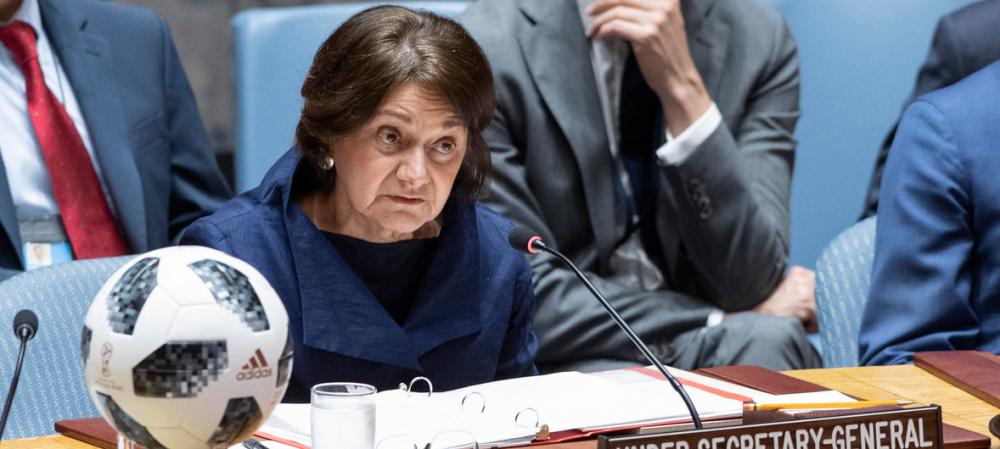Just Earth News | @justearthnews | 28 Jun 2018

New York: Notwithstanding “the continued adherence by Iran” to its nuclear-related commitments under the Joint Comprehensive Plan of Action (JCPOA), the agreement is “at a crossroads” the United Nations top political official said on Wednesday.
“On 8 May 2018, the United States announced its withdrawal from the agreement. The Secretary-General … believes that issues not directly related to the Plan should be addressed without prejudice to preserving the agreement and its accomplishments,” Rosemary A. DiCarlo, Under-Secretary-General for Political Affairs, told the Security Council.
“At the same time, the Secretary-General calls on Iran to consider carefully the concerns expressed by Member States about Iranian activities that are allegedly contrary to the restrictive measures contained in annex B,” she added.
Annex B of Security Council resolution 2231, in which the Council endorsed the JCPOA, deals with the restrictions concerning Iran.
The JCPOA – reached by Iran, China, France, Germany, Russia, the United Kingdom, the US and the European Union – sets out rigorous mechanisms for monitoring restrictions placed on Iran’s nuclear programme, while paving the way for the lifting of UN sanctions against the country.
In her briefing, DiCarlo updated the 15-member Council on the status of implementation of various JCPOA provisions, concerning nuclear verification, ballistic missile development and other armaments restrictions; as well as assets freezes, and travel bans.
On the ballistic missile-related provisions, the UN official informed the Council that, since the last report, the Secretariat had been informed by Saudi authorities of “nine additional launches of ballistic missiles by the Houthis, which in their assessment were Iranian Qiam-1 missiles.”
“The Secretariat assesses that the debris of the five missiles launched at Yanbu and Riyadh since July 2017 share key design features with the Iranian Qiam-1 ballistic missile,” she said, adding: “It is also our assessment that some component parts of the debris were manufactured in Iran.”
She noted however, that at present, the Secretariat “is unable to determine whether such missiles, or parts thereof, or related technology, may have been transferred from Iran after 16 January 2016, the date when annex B provisions came into effect.”
She also informed Council members of information received from Israel regarding the possible presence of an Iranian drone in Syria, which was reportedly downed after entering Israeli airspace in February.
“The Secretariat did not have the opportunity to examine its debris, but images provided by Israeli authorities show that its wing configuration appears consistent with that of an Iranian drone unveiled in October 2016,” informed Ms. DiCarlo, adding that the Secretariat “has no information as to the owner and operator of those drones.”
UN Photo/Eskinder Debebe